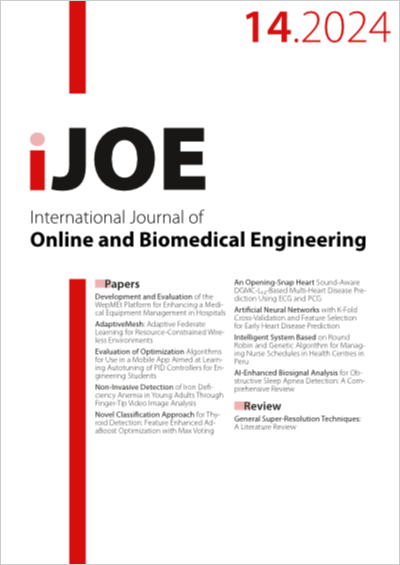Artificial Neural Networks with K-Fold Cross-Validation and Feature Selection for Early Heart Disease Prediction
DOI:
https://doi.org/10.3991/ijoe.v20i14.51479Keywords:
Diagnostic analytics, Feature selection, Healthcare system, Heart diseases, K-fold Cross-validation, Machine learningAbstract
The most common reason behind death all over the world is heart diseases. These conditions are to hit hardest in low- and middle-income nations, where 80% of premature heart attacks could be prevented. In this regard, early diagnosis also plays an important role in increasing patient health and survival rate from heart disease. The purpose of this study was to improve the forecasting power by means of feature selection techniques and then apply K-Fold cross validation in combination with high-performance ensemble machine learning (ML) methods (J48, Artificial Neural Networks (ANNs), Logistic Regression, Naive Bayes, K-Nearest Neighbors) by utilizing a dataset of 401,958 patients. Our experimental results demonstrate that ANNs achieve the highest accuracy at 91.48%. They also record the lowest Mean Absolute Error (MAE) of 0.13, highlighting their precision in predictions. Additionally, ANNs exhibit a low root Mean Squared Error (RMSE) of 0.26, further indicating their reliability in modeling.
Downloads
Published
How to Cite
Issue
Section
License
Copyright (c) 2024 Inssaf EL Guabassi, Zakaria Bousalem, Rim Marah, Abdellatif Haj

This work is licensed under a Creative Commons Attribution 4.0 International License.



